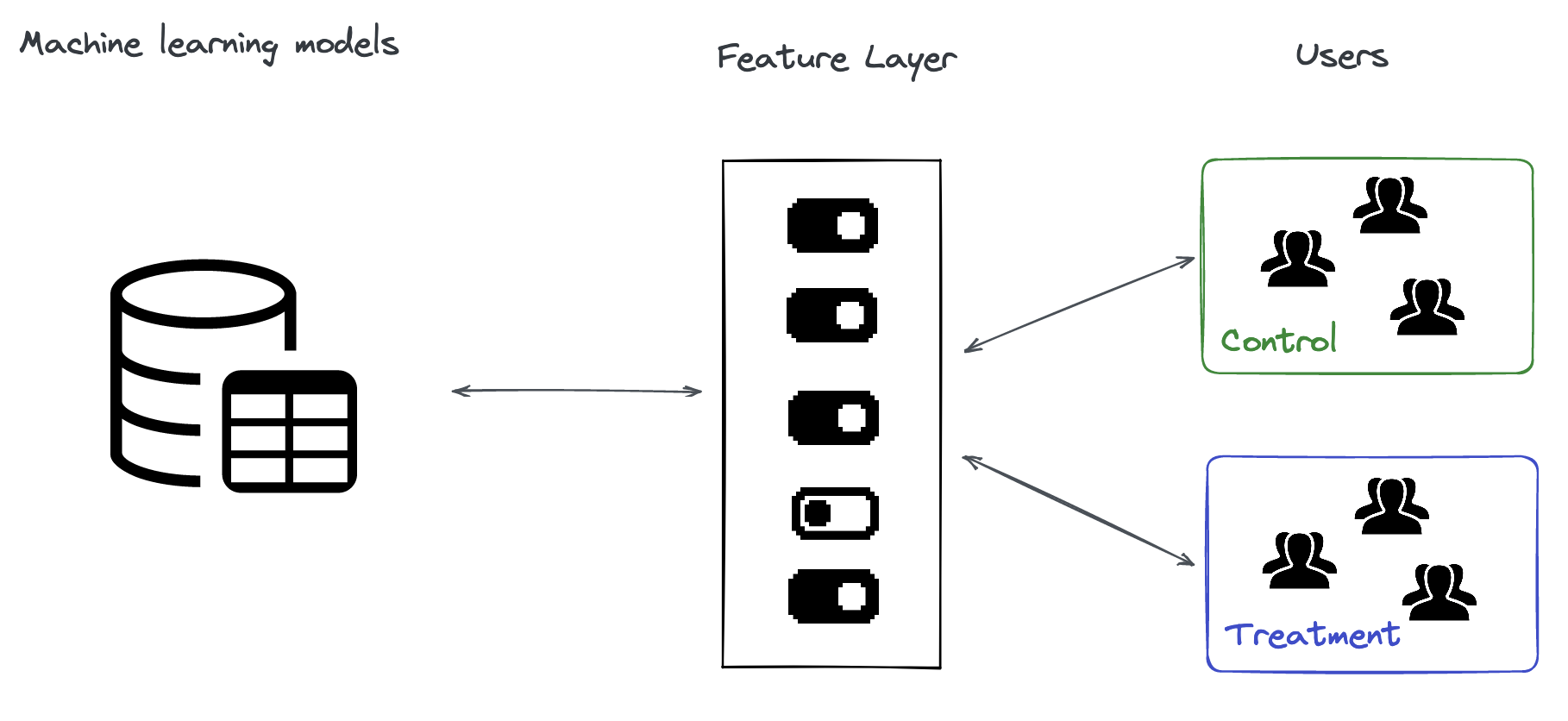Feature flags are a powerful tool that can be used in data science and developing machine learning models. They allow developers to enable or disable specific features in an application or model, without having to redeploy or modify the codebase. This can be extremely useful when working with large, complex models that require frequent updates, or when testing new features in production environments. In this article, we'll examine how feature flags can be used in data science and developing machine learning models, and the benefits they provide.
What are Feature Flags?
Feature flags are a technique used in software development that allows developers to control the release of features in an application or model. They can be thought of as a boolean value that determines whether a feature is enabled or disabled. When a feature flag is enabled, the feature is made available to users, and when it's disabled, the feature is hidden. Feature flags can be implemented in many ways, such as using environment variables, configuration files, or a database.
How can Feature Flags be used in Data Science?
Feature flags can be used in many ways in data science, including:
- A/B testing: Feature flags can be used to perform A/B testing on a model, where different versions of a model are released to different groups of users. This allows developers to test different models or features in production environments, and measure their effectiveness.
- Gradual rollouts: Feature flags can be used to gradually rollout new models or features to production environments. This can be useful when working with large, complex models that require frequent updates, as it allows developers to test the new models on a smaller scale before releasing them to all users.
- Temporary feature disablement: Feature flags can be used to temporarily disable a feature in a model, without having to redeploy or modify the codebase. This can be useful when a feature is causing issues or is not performing as expected, as it allows developers to quickly disable the feature until the issues are resolved.
How can Feature Flags be used in Developing Machine Learning Models?

Feature flags can also be used in developing machine learning models, including:
- Model versioning: Feature flags can be used to version different models, allowing developers to quickly switch between different models for different use cases or environments.
- Hyperparameter tuning: Feature flags can be used to enable or disable specific hyperparameters in a model, allowing developers to experiment with different hyperparameters in production environments.
- Model monitoring: Feature flags can be used to enable or disable specific monitoring features in a model, allowing developers to monitor different aspects of the model's performance and behavior in production environments.
Benefits of Feature Flags in Data Science and Developing Machine Learning Models
Using feature flags in data science and developing machine learning models provides several benefits, including:
- Increased flexibility: Feature flags allow developers to make changes to a model or application without having to redeploy or modify the codebase, providing greater flexibility in development and testing.
- Risk mitigation: Feature flags can be used to gradually rollout new features or models, allowing developers to mitigate risks associated with large-scale releases.
- Improved performance: Feature flags allow developers to experiment with different models and hyperparameters in production environments, improving the performance and accuracy of the model.
Conclusion
Feature flags are a powerful tool that can be used in data science and developing machine learning models. They provide increased flexibility, risk mitigation, and improved performance, making them an essential part of any data science or machine learning development workflow. By using feature flags, developers can quickly and easily test new features, roll out new models, and optimize model performance in production environments.